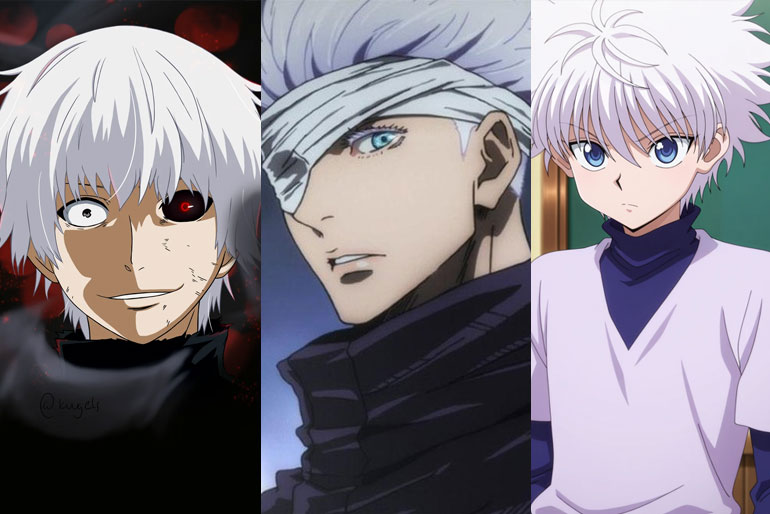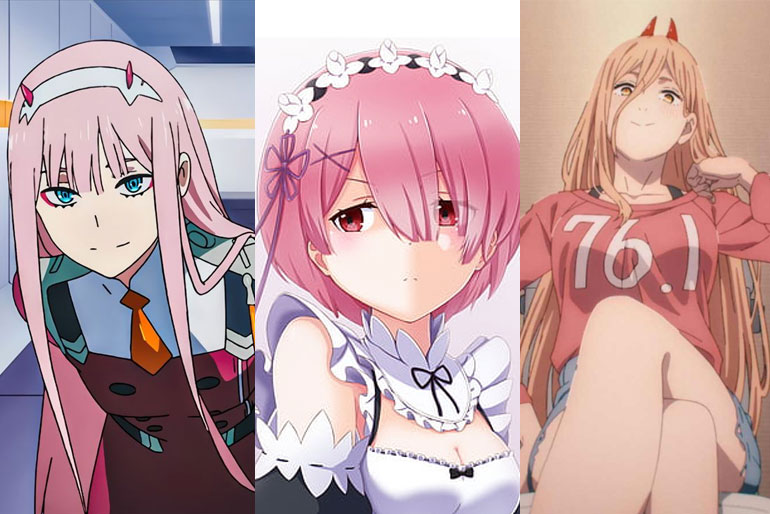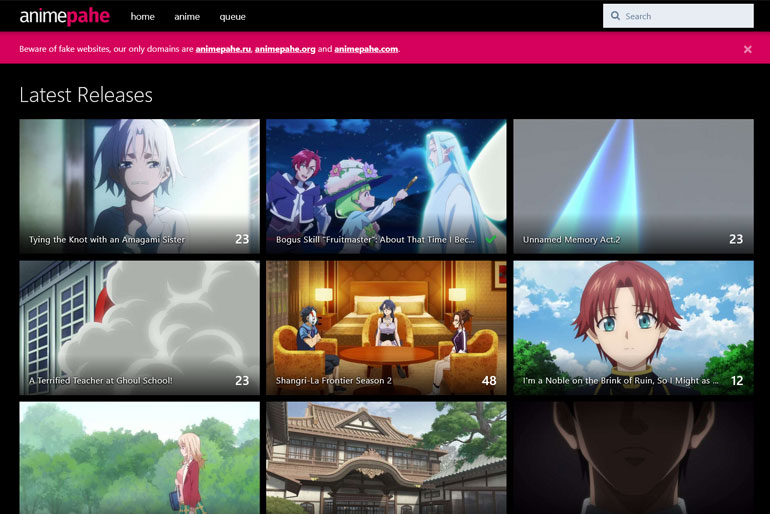White-haired characters in anime have a way of instantly capturing our attention. Whether it’s their striking look or the symbolic weight that color carries, these characters often represent something mysterious, powerful, or unique about the story. In Japanese culture, white is linked to spiritual or otherworldly elements, and in anime it often signals that a character brings extra depth, mystery, or power to the plot. Let’s be honest: when a white-haired character walks on screen, you know things are about to get interesting. They tend to steal the scene with an aura of swagger or intensity, never fading into the background. From wise mentors to battle-hardened heroes (or even tragic souls), their snowy hair makes them stand out across generations of anime. In this article, we’ll look at some of the most iconic white-haired anime characters, exploring what makes each one so memorable and beloved by fans.
White Hair Anime Characters
Gojo Satoru – Jujutsu Kaisen
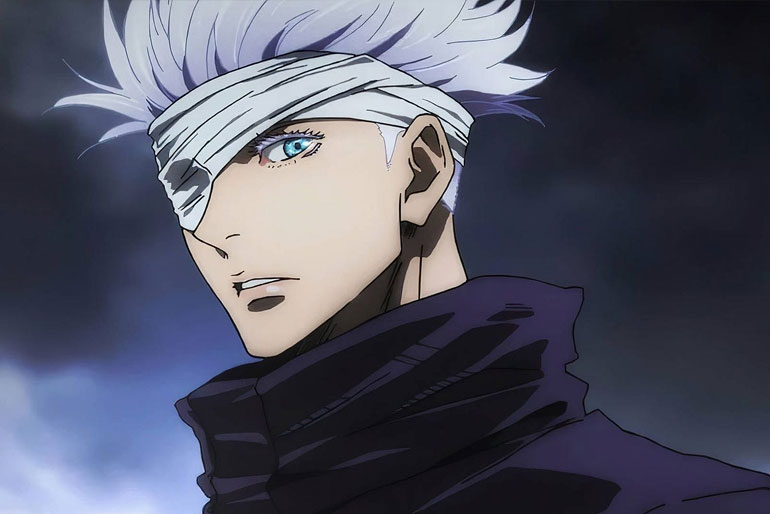
Satoru Gojo is the ultra-cool teacher from Jujutsu Kaisen who has literally rewritten the standards for power in his series. With his spiky white hair and signature blindfold (or sometimes sunglasses), Gojo is instantly recognizable as the strongest sorcerer around. He’s playful and laid-back, often cracking jokes or acting carefree, which makes it even more surprising (and awesome) when he unleashes his overwhelming jujutsu abilities. This mix of goofy confidence and terrifying power is exactly why fans adore him. Gojo can go from telling his students not to worry because “I’m the strongest,” to actually proving it on the battlefield in jaw-dropping fashion. Despite his arrogance, he truly cares for his students and allies, showing that not all white-haired anime badasses have to brood to be cool. In short, Gojo’s charm, power, and downright flashy fighting style make him one of the most iconic modern anime characters with white hair.
Ken Kaneki – Tokyo Ghoul
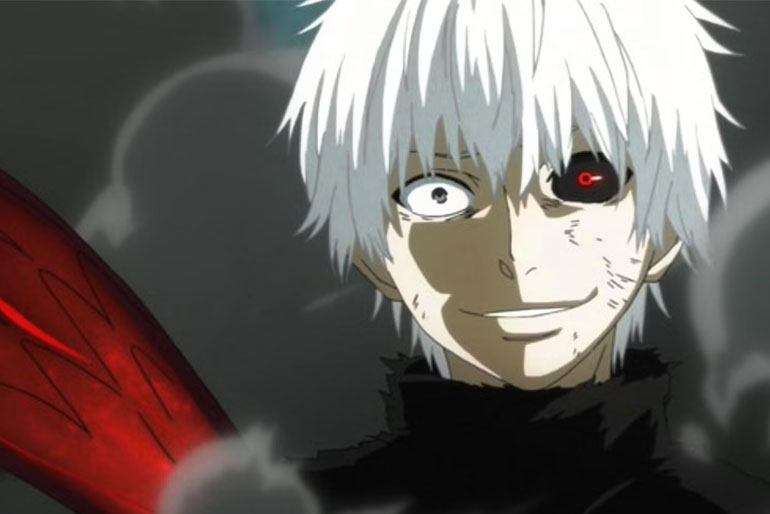
Ken Kaneki started off as a gentle bookworm with black hair, but an encounter with a ghoul turned his world upside down. After enduring a traumatic experience, Kaneki’s hair shockingly turns from black to stark white – a physical symbol of the profound change in his life. As a half-ghoul, half-human hybrid, Kaneki is thrown into a violent new reality where he must fight to protect those he cares about. His once timid personality gains a colder, resolute edge, and he develops incredible powers (like a ghoul’s kagune tentacles) that give him a chillingly cool aura. What makes Kaneki truly iconic is this dramatic transformation and inner struggle. He’s a tortured soul trying to reconcile his human compassion with ghoul instincts, which adds a layer of tragedy beneath that white-haired, sharp-eyed exterior. Watching Kaneki grow from a scared student into a formidable fighter – all while clinging to his humanity – is both heart-wrenching and inspiring for many fans.
Hatake Kakashi – Naruto
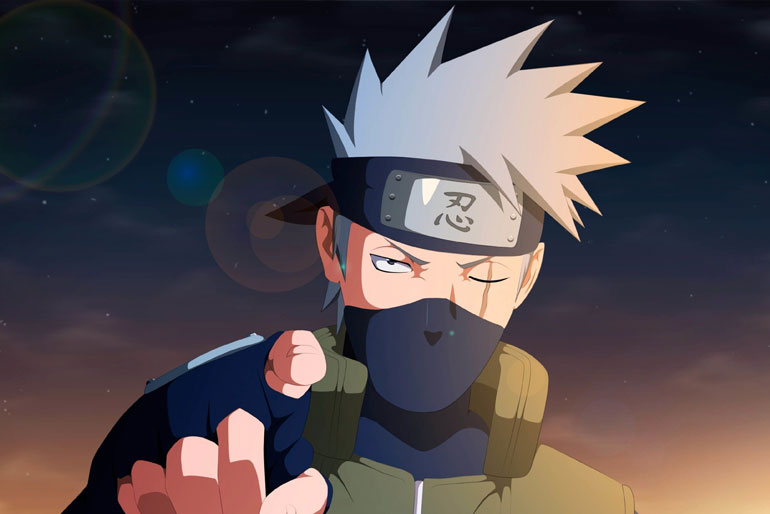
Kakashi Hatake, known as Konoha’s legendary “Copy Ninja,” is one of the most popular white-haired characters in anime. In the world of Naruto, Kakashi stands out immediately with his gravity-defying white hair, masked face, and one eye covered – until he dramatically lifts his headband to reveal the Sharingan eye he received from a friend. As the mentor of Naruto and his teammates, Kakashi exudes a laid-back, somewhat aloof vibe (he’s often found reading his little orange book). Yet beneath that easygoing exterior lies a shinobi of incredible skill and depth. Kakashi has copied over a thousand jutsu, earned respect even from his enemies, and weathered a tragic past that he rarely lets show. He tries to mask the pain of losing loved ones and the burdens he carries, focusing instead on protecting his comrades. Fans love Kakashi for his cool-headed wisdom, quirky habits (those Make-Out novels!), and the way he can be both humorous and absolutely deadly serious. Whether he’s ringing a bell in a training exercise or unleashing his Lightning Blade in battle, Kakashi’s white hair and mysterious demeanor have made an indelible mark on anime fandom.
Near (Nate River) – Death Note
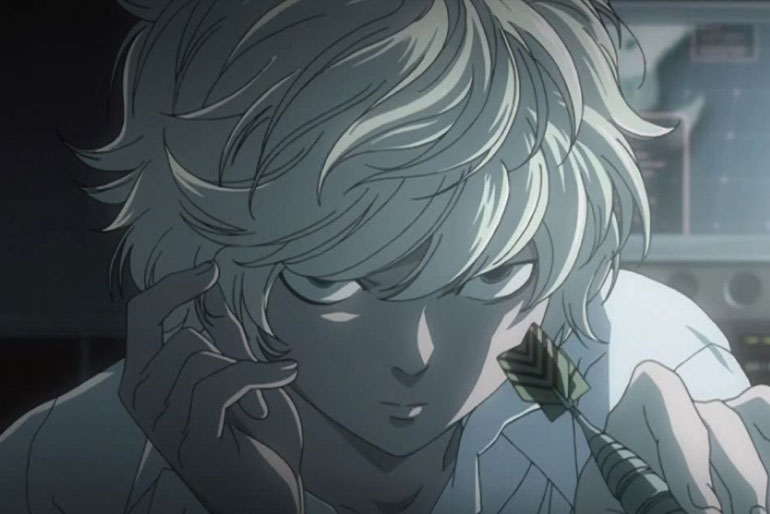
Near is the child prodigy who steps into the massive shoes of L in Death Note, and his fluffy white hair immediately sets him apart. As one of L’s successors, Near is an incredibly intelligent and calculating boy who takes over the Kira case after L’s demise. He has a calm, almost cold demeanor – often seen twirling toys or stacking dice as he methodically analyzes evidence. Near’s white hair and pale features mirror his detached, analytical nature. He’s not one for emotional outbursts; instead, he quietly works in the background, piecing together puzzles that would baffle others. Although he’s often overshadowed by the legacy of his predecessor L, Near proves his brilliance in his own way, using pure logic and a bit of daring strategy to corner the infamous Kira. His ability to remain cool under pressure (some might say too cool) makes him memorable. Near might lack social graces – he’s anti-social and a touch odd – but his intellect and the eerie calm he maintains make him a standout white-haired character. By the end of the series, even those who doubted this quiet genius can see why he was chosen to carry on L’s will.
Killua Zoldyck – Hunter x Hunter
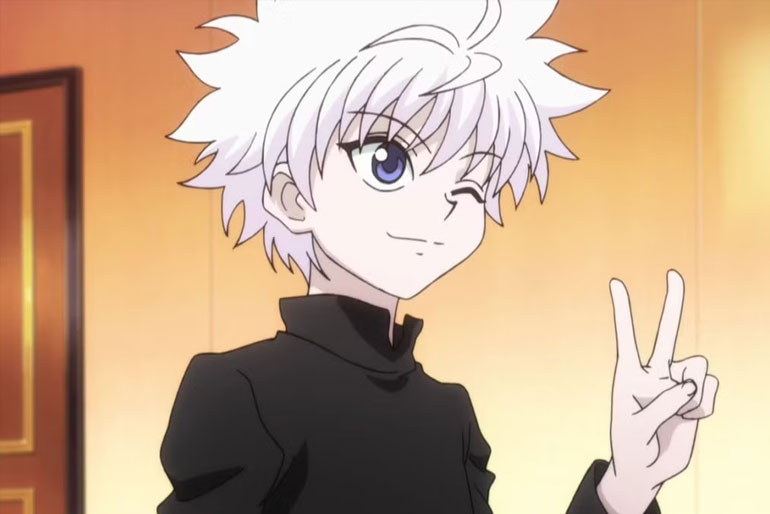
Killua Zoldyck is proof that looks can be deceiving. At first glance, he’s a cheery, sweet-toothed kid with spiky white hair and an easy smile. In truth, Killua was born into a notorious family of assassins and was trained from a young age to be a lethal killer. That dark upbringing means he’s gone through painful trials that most kids could never imagine. Despite the grim start to his life, Killua’s story in Hunter x Hunter is about carving his own path. He runs away from his family’s expectations, determined to figure out who he wants to be outside of being an assassin. This journey brings him his best friend Gon, whom Killua fiercely protects with all the deadly skills he possesses. Fans are drawn to Killua’s dual nature: one moment he’s goofy, eating chocolate robots or teasing his friends, and the next he can turn absolutely merciless if someone he cares about is in danger. His electric Nen abilities (literally, he can generate lightning) and acrobatic fighting style make him a blast to watch in battles. But it’s Killua’s heart, his loyalty, and the way he gradually overcomes the darkness of his past that truly make him iconic. This white-haired boy shows that even someone raised in the shadows can shine brightly with compassion and courage.
Shoto Todoroki – My Hero Academia
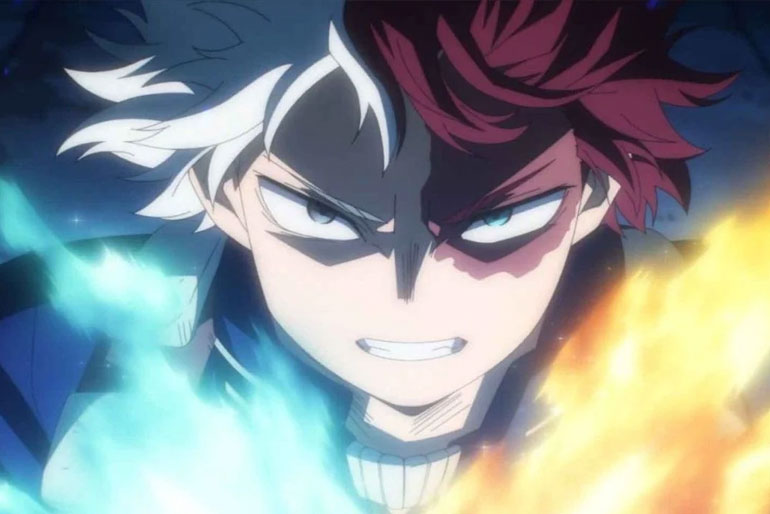
Shoto Todoroki’s hair is half-crimson red and half-snowy white – a bold two-tone that directly reflects who he is. As the son of a top hero and a powerful ice-wielding mother, Shoto was born with a dual quirk: fire on his left side, ice on his right. His split hair color (white on the right side) symbolizes this dual nature perfectly. In My Hero Academia, Todoroki initially comes off as aloof and ultra-serious, focused solely on becoming a hero without using his father Endeavor’s flame power out of spite. He practically embodies the phrase “cool as ice.” But as the series progresses, Shoto undergoes one of the most compelling emotional arcs in the show. He confronts the trauma of his childhood and the resentment towards his father, learning that embracing both sides of his quirk doesn’t mean becoming his father – it means defining heroism on his own terms. Once he accepts his flames along with his ice, Todoroki becomes an absolute powerhouse in battle (his flashy moves at the Sports Festival are unforgettable) and a more open, caring friend. Despite his initially cold persona, Shoto is surprisingly kind and thoughtful under the surface. Fans love him not just for his explosive (or freezing) combat skills, but for his growth from a bitter teen to a hero who balances fire and ice, hot and cold, in perfect harmony.
Makishima Shogo – Psycho-Pass
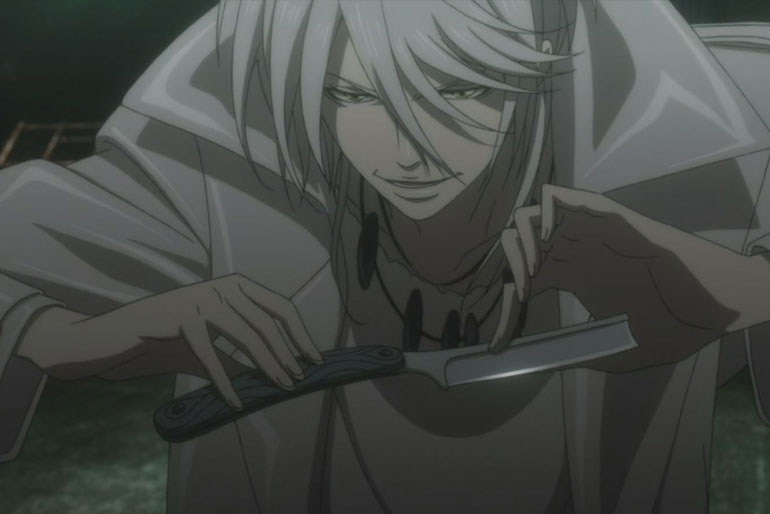
Shogo Makishima is the soft-spoken villain who can send chills down your spine in Psycho-Pass. With his pure white hair and calm, almost gentle demeanor, Makishima doesn’t look like a typical anime bad guy at first. He isn’t a cackling tyrant or a raging monster; instead, he’s a philosophical anarchist with a polite smile – which makes his cruelty all the more unsettling. In the futuristic world of Psycho-Pass, society’s crimes are monitored by the Sibyl System, yet Makishima is such an anomaly that his emotions and criminal intent can’t be detected at all. That essentially makes him invisible to law enforcement, a fact he exploits to wreak havoc. Makishima’s combination of sharp intellect and complete disregard for life creates a terrifying foil for the protagonists. He often muses about literature and free will, quoting books as he orchestrates violent crimes. With an air of elegance and an almost unruffled courtesy, he embodies chaos wrapped in elegance. Makishima is memorable for being a villain who believes wholeheartedly in his twisted ideals – he sees society’s reliance on technology as a flaw and pushes it to the breaking point. Love him or hate him, you can’t deny that Shogo Makishima’s eerie calm and snow-white hair leave a lasting impression, reminding us how frightening a soft-spoken nihilist can truly be.
Toshiro Hitsugaya – Bleach
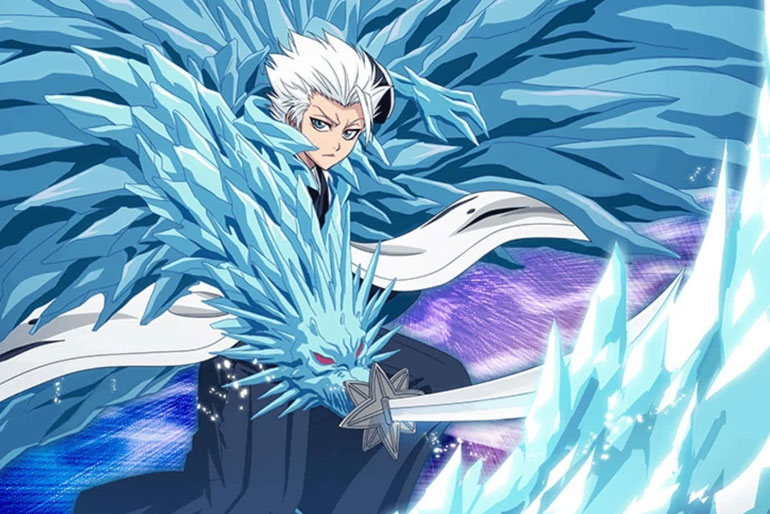
Toshiro Hitsugaya may be one of the youngest characters to hold a captain rank in the Bleach universe, but don’t let his youthful appearance fool you – he’s a little prodigy with a lot of bite. This short, spiky-haired Shinigami sports white hair that accentuates his icy powers (fittingly, he commands the strongest ice-element Zanpakutō, Hyōrinmaru). As the captain of Squad 10 in the Soul Society, Toshiro carries himself with a maturity and seriousness far beyond his years. He’s often annoyed when people treat him like a kid, given that he’s technically much older than he looks, and he’s earned every bit of respect through hard work and talent. In battle, Hitsugaya is a standout – his ice dragons and freezing attacks are visually stunning and incredibly powerful, often catching enemies off-guard. Fans love the contrast between Toshiro’s cool, responsible nature and the rare moments when his age shows (like his love for watermelon or when he gets dragged into silly antics in comedy sketches). Despite occasionally being underestimated due to his child-like stature, he repeatedly proves his strategic mind and dedication to protecting those he cares about. Toshiro Hitsugaya’s blend of fierce power, leadership, and yes, a bit of adorable grumpiness, has solidified him as a beloved white-haired character in anime.
Kanade Uryuu – Platinum End
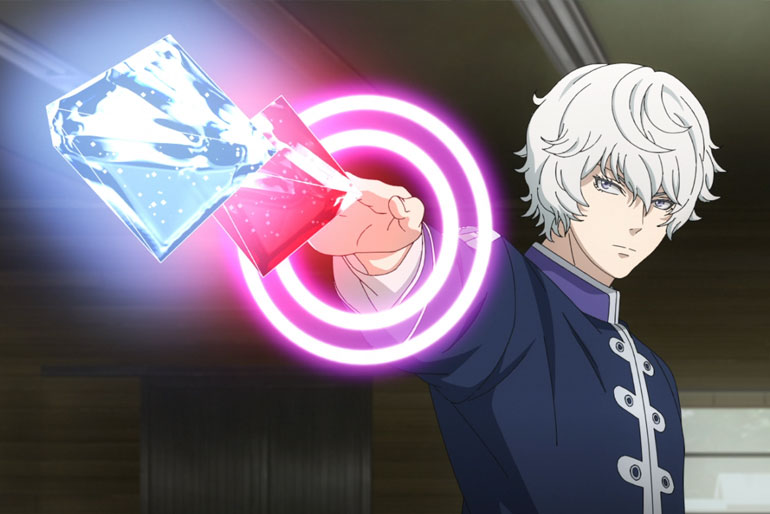
In Platinum End, Kanade Uryuu initially presents himself as a shining hero named “Metropoliman,” but beneath that white suit of armor lies a cold-hearted villain. A high school student with wavy white hair and an angelic visage, Kanade is anything but angelic in his actions. He’s actually a God candidate competing to become the next God, and he’ll stop at nothing to eliminate his rivals. What makes Kanade so memorable is the chilling contrast between his heroic facade and his true sociopathic nature. He stages public stunts as Metropoliman, pretending to be a righteous savior stopping crime, but behind the scenes he is mercilessly murdering the other candidates one by one. Kanade is extremely intelligent and manipulative – always three steps ahead in crafting deadly traps for his opponents. He’s obsessed with beauty and perfection, looking down on anyone he deems “inferior,” which gives him a twisted sort of god-complex. With his white hair symbolizing a false purity, Kanade Uryuu stands out as a newer face of evil in anime. Fans of the Death Note creators (who made Platinum End) were especially struck by Kanade’s brand of villainy: calm, calculated, and utterly ruthless. He may not be as well-known as some others on this list, but anyone who’s watched Platinum End won’t soon forget the white-haired menace who called himself a hero while acting as a monster.
Shō Kusakabe – Fire Force
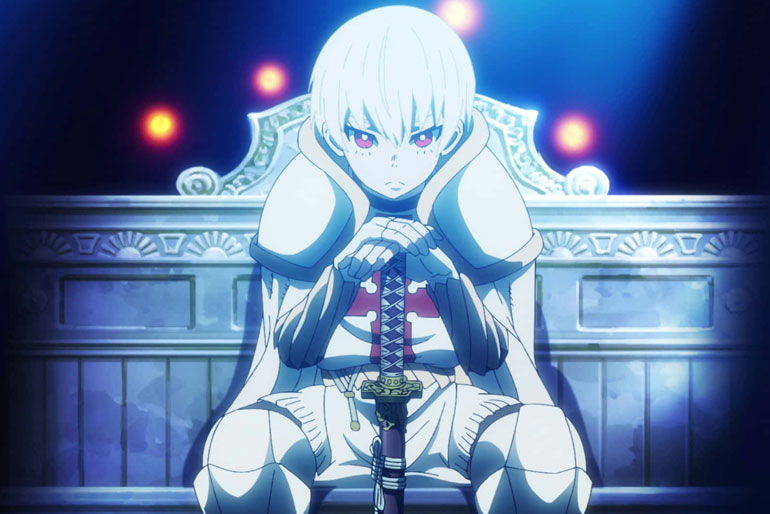
Shō Kusakabe brings a literal chill to Fire Force, with his snow-white hair, piercing red eyes, and the frightening ability to stop time (by cooling the universe!) during battle. Shō is introduced as the Commander of the Knights of the Ashen Flame, essentially a high-ranking villain, and it’s later revealed that he is actually the long-lost younger brother of protagonist Shinra Kusakabe. Abducted as an infant and raised by the Evangelist (the mysterious cult leader), Shō grew up devoid of normal human emotions. He’s cold, ruthless, and views everything through the lens of the Evangelist’s teachings. Clad in white and wielding a blade, Shō can seem almost ethereal – fitting for someone who exists partially outside normal time when he uses his Adolla Burst power. His clash with Shinra is one of the highlights of the series, not just for the spectacular combat where Shō’s powers create beautiful frozen scenes, but also for the emotional stakes. Bit by bit, cracks appear in Shō’s icy demeanor as he learns about the family he was taken from. When his own buried emotions start to resurface (thanks to a brotherly bond that refuses to die), Shō becomes a more tragic and three-dimensional figure. Still, as an antagonist, he’s absolutely formidable. This white-haired young commander leaves a strong impression on viewers with his mix of chilling power and the flickers of innocence that shine through from the little brother he once was.
Griffith – Berserk

Griffith is a character whose very name sends shivers down the spines of Berserk fans. With his long, flowing white hair and almost ethereal beauty, Griffith at first appears every bit the noble hero. He’s the charismatic leader of the Band of the Hawk, a mercenary group that rises to fame for their battlefield prowess. Ambitious and elegant, Griffith carries himself like someone destined for greatness – and indeed, he dreams of ruling a kingdom of his own one day. His dynamic with his devoted comrade Guts is central to the story, as they share battles and glory on the way to accomplishing Griffith’s dream. However, what truly makes Griffith one of the most iconic (and controversial) white-haired characters is the drastic turn his story takes. Without delving into heavy spoilers, let’s just say Griffith’s pursuit of his dream leads him to make a horrific choice that transforms him completely. The once radiant “White Hawk” goes from admired hero to an almost demonic figure, in one of the most shocking twists in anime/manga history. This fall from grace – the betrayal and rebirth – cements Griffith as an unforgettable character. He embodies the saying “the bigger they are, the harder they fall.” Fans continue to debate Griffith’s actions and morality to this day, which just shows how impactful he is. Love him or hate him, Griffith’s white-haired, angelic appearance and the darkness lurking underneath have made an indelible mark on anime culture.
Jiraiya – Naruto
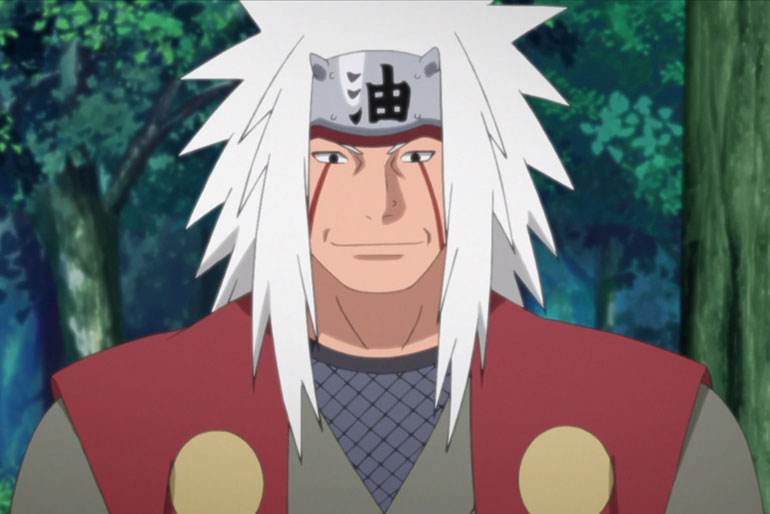
Jiraiya, affectionately known as the “Pervy Sage,” proves that even the goofiest of mentors can be truly legendary. With his wild white hair, red facial markings, and a huge grin, Jiraiya is one of the most beloved characters in Naruto. He’s a wandering sage, one of the Legendary Sannin (alongside Tsunade and Orochimaru), and a renowned ninja in his own right. From the moment he’s introduced, often peeping in hot springs or making inappropriate jokes, Jiraiya brings a hearty dose of humor. But beneath the lecherous old-man act is a wise, powerful warrior who has saved the shinobi world more times than people realize. As Naruto’s godfather and mentor, he teaches Naruto some of the most important lessons – not just about jutsu, like how to control the Nine-Tails’ chakra or perform the Rasengan, but about believing in himself and valuing his friends. Jiraiya is known for his strength and wisdom, as well as his silly antics. He penned the (in-universe) famous smut novel series Icha Icha, to which even Kakashi is hopelessly addicted. Yet, when things get serious, Jiraiya’s jovial face hardens and the legendary shinobi emerges, complete with toad summoning and sage mode. He played a crucial role in the fight against the Akatsuki and left a lasting legacy that changes the course of the story. Jiraiya’s journey, filled with heroism, humor, and a dash of tragedy, makes him an icon. His parting words and the impact he had on Naruto’s life continue to hit fans right in the feels, proving that this white-haired mentor’s influence is anything but perishable.
Gintoki Sakata – Gintama
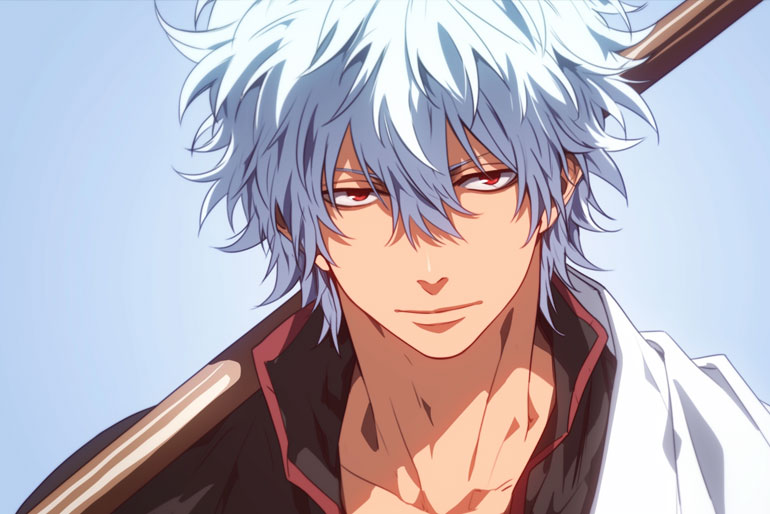
Gintoki Sakata is the silver-haired jack-of-all-trades from Gintama who can make you cry with laughter one minute and pump your fist in excitement the next. He runs the Yorozuya (Odd Jobs) business in an Edo-period Japan overrun by aliens, and is usually found picking his nose, eating sweets, or reading a Jump magazine on the couch. With his naturally permed white hair and dead-fish eyes, Gintoki often looks lazy or unmotivated, but don’t be fooled – he’s a former samurai who earned the fearsome title of “Shiroyasha” or White Demon during a past war. When duty calls or his friends are threatened, Gintoki’s goofy demeanor drops and he reveals the swordsman within, displaying extraordinary sword skills and a resolve as hard as steel. Part of Gintoki’s charm is this dual personality: the laid-back, candy-loving slacker vs. the haunted warrior with a heart of gold. He’s fiercely loyal to his friends (his makeshift family at Yorozuya and the Shinsengumi police force allies), and he’s willing to take on anyone – be it alien overlords, vengeful assassins, or even the shogun – to protect them. In true Gintama fashion, Gintoki is also known for breaking the fourth wall and parodying other anime, which only makes him more endearing. His jokes and antics have made countless fans laugh, while his heroics and hidden pain have made them equally emotional. Through comedy and drama, Gintoki’s white hair and samurai soul remain a beacon, symbolizing the silver soul (gintama) of the series – never losing its luster.
Archer (Emiya) – Fate/Stay Night & Unlimited Blade Works
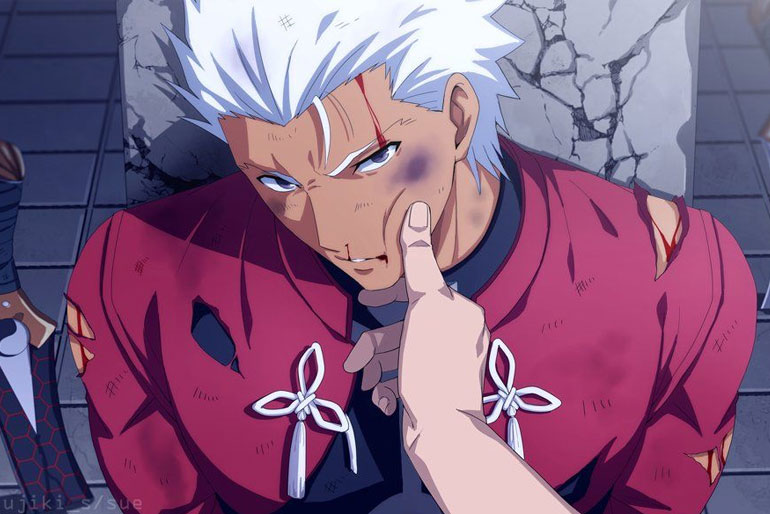
Archer, the white-haired bowman from the Fate series, is the very definition of a walking enigma. At first, we meet Archer as one of the summoned heroic spirits during the Holy Grail War. Clad in a sleek red coat and armed with dual blades (despite his “Archer” title, he’s as handy with swords as he is with arrows), he cuts a striking figure with short white hair and steely gray eyes. Archer comes off as cynical, hardened by some bitter past, and he often clashes with the idealistic protagonist, Shirou Emiya. In fact, Archer seems to take a kind of harsh pleasure in trying to crush Shirou’s naive dreams of heroism. As the story progresses, we learn there is far more to Archer than meets the eye – his true identity and connection to Shirou become a major twist. Without spoiling that reveal, it’s safe to say Archer’s story is a tragic paradox of sorts, filled with regret and resolve. Fans find him iconic not just for his impressive combat skills (he can materialize all sorts of weapons and his archery can level buildings), but for the depth of his character. He represents the cost of pursuing an ideal at the expense of oneself. Despite his cold front, Archer isn’t truly villainous – if anything, he’s trying in a roundabout way to save someone from suffering as he did. His biting sarcasm and no-nonsense attitude add spice to every scene he’s in. By the end of Unlimited Blade Works, Archer stands out as one of the series’ most memorable figures: a weary hero with white hair, caught between the futility and necessity of fighting for what’s right.
Decim – Death Parade
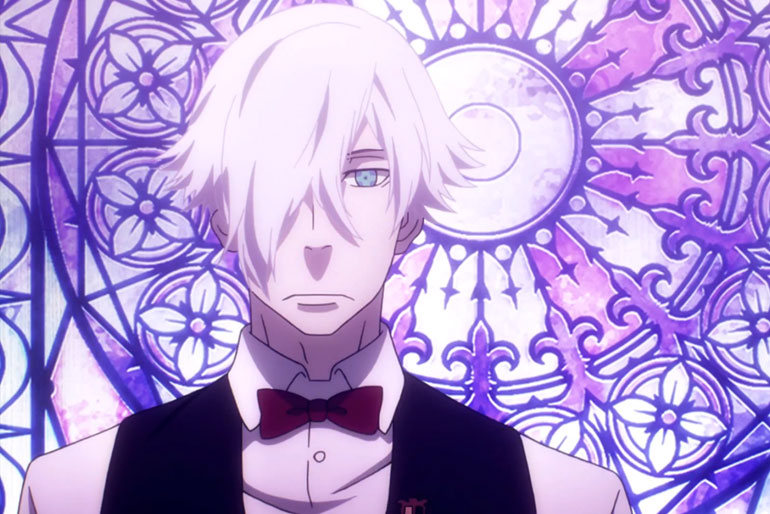
Decim is the pale-haired bartender who presides over a very unusual bar in Death Parade. At the Quindecim bar, recently deceased souls are his patrons, and Decim’s job as an arbiter is to judge whether those souls go on to reincarnation or the void. With his white hair, emotionless demeanor, and immaculate bartending skills, Decim at first feels more like an unfeeling robot than a person. He speaks in a detached, polite monotone, and takes his duties deadly seriously – you won’t catch this guy cracking a smile or bending the rules. In fact, Decim has a quirky hobby of creating mannequins (dummies) in his spare time, which only adds to his offbeat vibe. What makes Decim fascinating is watching his stoic mask begin to slip as he encounters complex, emotional situations in the souls he judges. He’s been doing this for only a few years and is still learning about human emotions. With the help of a certain warm-hearted visitor to the bar, Decim starts to experience feelings and doubts that he’s never had before. Seeing him struggle to understand concepts like regret, sacrifice, and compassion gives this white-haired character a gentle, poignant arc in an otherwise dark premise. By the end of the series, Decim shows that even an arbiter – meant to be impartial and cold – can grow a human heart. His iconic line, delivered with a soft smile, “Thank you for playing,” perfectly encapsulates his respectful treatment of the souls who pass through. In a show filled with moral dilemmas, Decim’s white hair and solemn blue eyes become a symbol of calm judgement, making him an unforgettable part of Death Parade.
Tobirama Senju – Naruto
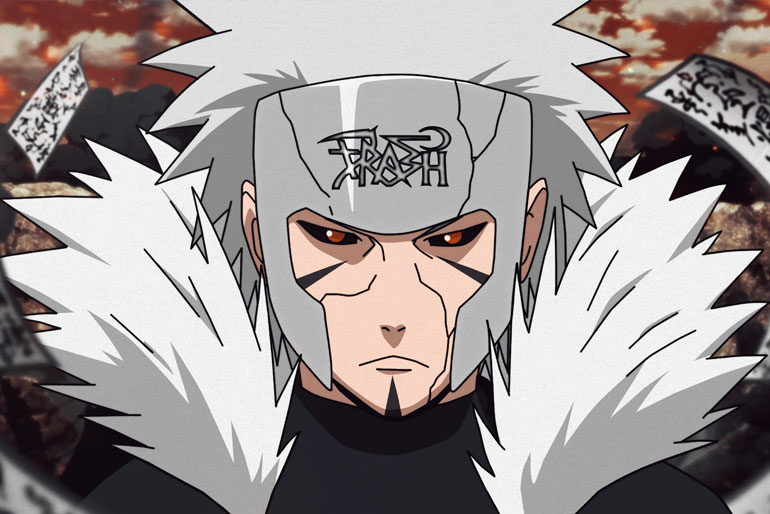
Tobirama Senju, the Second Hokage of the Hidden Leaf Village, proves that white hair isn’t just for flashy young heroes or mysterious villains – it can also crown the head of a stern, no-nonsense leader. In the Naruto world, Tobirama is remembered as one of the most powerful shinobi in history. With his fierce gaze and that distinctive wild white hair, Tobirama certainly looks formidable. He was the younger brother of the First Hokage (Hashirama Senju) and inherited Hashirama’s Will of Fire in his own pragmatic way. Tobirama was a genius who created many jutsu that forever changed the ninja world – including the Shadow Clone Technique and the (often controversial) Reanimation Jutsu. As a leader, he’s known for establishing Konoha’s organizational systems, like the Academy and the Chūnin Exams, laying the foundation for the village’s future. Personality-wise, Tobirama is extremely practical and stern. He didn’t hesitate to speak his mind and even other strong characters could feel intimidated by him. (In fact, it’s joked that even his upbeat elder brother would straighten up when Tobirama gave the look.) He had his biases – especially a wary eye toward the Uchiha clan – which later generations would critique, but it was born from his desire to protect the village from internal conflict. Fans often enjoy Tobirama for his blunt attitude (he brings some surprisingly humorous moments when reanimated in the series, due to how straightforward and serious he is). As a white-haired Hokage, Tobirama might not be as flamboyant as some younger characters, but he commands respect. His legacy and the image of that white-haired warrior-water style master remain iconic in the Naruto fandom.
Tengen Uzui – Demon Slayer: Kimetsu no Yaiba
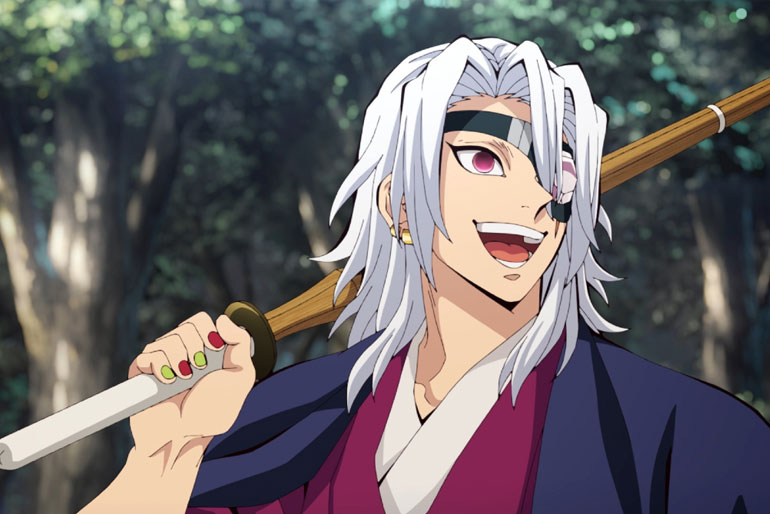
If the phrase “flashy and flamboyant” were a person, it would be Tengen Uzui. This Demon Slayer Corps Hashira doesn’t just have white hair – he makes sure to decorate it with a stylish headband adorned with gemstones, because why not? Tengen is the Sound Hashira, and everything about him is loud and over-the-top in the best way. With his confident smirk, muscular build, and eccentric fashion sense, Tengen declares that he’s “god of festivals” and loves to live life as extravagantly as possible. He has three wives (yes, three, and he adores each of them dearly), and he’s all about flashiness in combat and personality. In the Entertainment District Arc of Demon Slayer, Tengen takes center stage to battle Upper Rank demons, and the fight is nothing short of spectacular – filled with explosive sound techniques, rapid swordplay, and enough flair to make you forget to blink. But underneath the bling and bravado, Uzui has a heart of gold. He cares deeply about protecting the innocent and his comrades. He also has a personal backstory as a former shinobi, which brought its own trauma and a vow to live and fight in a way that honors the value of life. Fans fell in love with Tengen’s outrageous one-liners and fearless attitude, as well as the softer moments where he shows humility or affection to those close to him. His white hair might not carry deep symbolic weight like some others on this list, but it certainly adds to his distinctive style. Tengen Uzui leaves a flashy impression – and according to him, that’s the only way to live.
Garou – One Punch Man
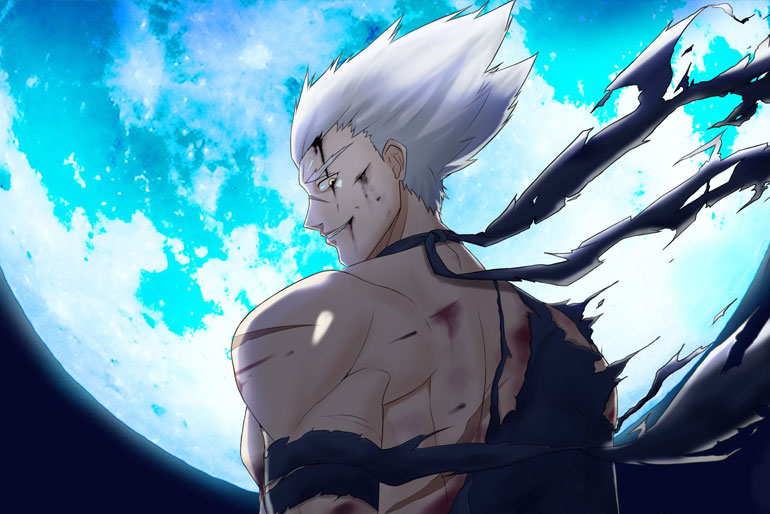
Garou, known ominously as the “Hero Hunter,” is one of the most formidable characters in One Punch Man and sports a wild mane of silver-white hair that mirrors his ferocious nature. A former disciple of the martial arts master Bang, Garou took a dark turn by deciding to become a monster in a world full of heroes. He’s often called the “Human Monster” because, despite being human, he fights with the brutality and strength of a dragon-level creature. Garou’s journey is essentially the reverse of a typical hero’s – he idolizes the monsters in stories because he sympathizes with the underdog, and he grows to despise the hero society’s hypocrisy. As he battles hero after hero (and even other villains), Garou’s body endures unbelievable punishment. With each near-death experience, he comes back stronger, and his hair goes from a normal dark color to a fully white, spiky state as he “awakens” more power. By the peak of his rampage, Garou’s long white hair and glowing eyes truly make him look the part of the ominous foe he set out to be. He’s an expert martial artist, using a style called the Water Stream Rock Smashing Fist, and his adaptability in combat is off the charts. But beyond the epic fights, what makes Garou fascinating is his somewhat twisted yet oddly principled mindset – he doesn’t actually kill his opponents, and he often spares civilians, showing that he’s not pure evil. In a series that often parodies classic tropes, Garou comes across as a more complex antagonist who even garners some sympathy. Fans love watching his transformation and his relentless determination. In a sense, Garou with his silver hair represents the gray area between heroes and monsters – a one-man army challenging the definitions of justice and villainy.
Licht – Black Clover
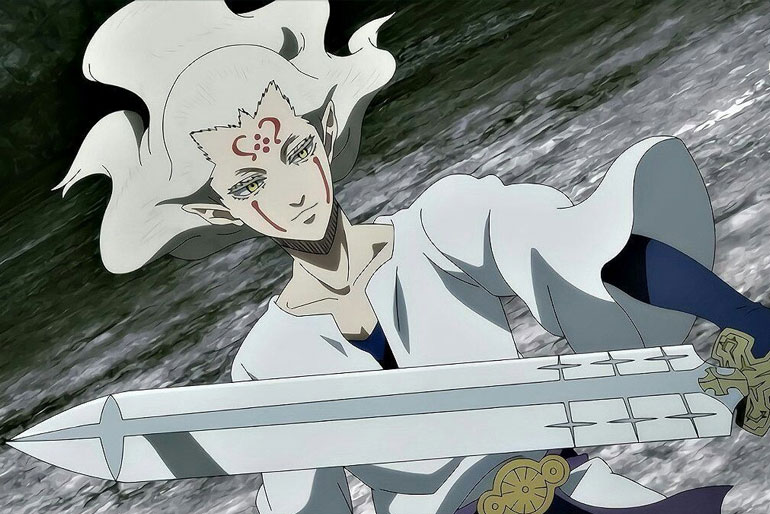
Licht is a character shrouded in mystery and tragedy in Black Clover. With long, flowing white hair and gentle eyes, he exudes a calm, almost saintly presence – fitting for someone whose name literally means “light.” Licht is introduced as the leader of the Eye of the Midnight Sun, a rogue mage group causing chaos for the Clover Kingdom. His followers believe deeply in him, seeing him as a savior figure for the persecuted Elf tribe. In truth, Licht is (or was) the leader of the ancient elves, a people who faced betrayal at the hands of humans. So behind his seemingly villainous actions is a deep well of sorrow and anger for the injustices done to his loved ones. Licht’s white hair and composed demeanor underscore his role as a charismatic revolutionary. He doesn’t rant or rave; he calmly asserts what he believes must be done to right the wrongs of the past. In battle, Licht (or the one carrying his will) is incredibly powerful, wielding light magic that is swift and devastating. He’s so strong that the heroes initially struggle to even come close to his level. As the story unfolds, the truth about Licht’s past and the real antagonist behind the scenes add layers to his character. What makes Licht iconic is that he isn’t a straightforward evil villain – he’s a sympathetic figure whose dreams were twisted by tragedy. Even after all the conflict, you can sense the goodness in him. His quiet resolve, the iconic white hair, and the epic scope of his story (involving ancient legends and massive battles) ensure that Licht remains a memorable figure for Black Clover fans.
Atsushi Nakajima – Bungou Stray Dogs
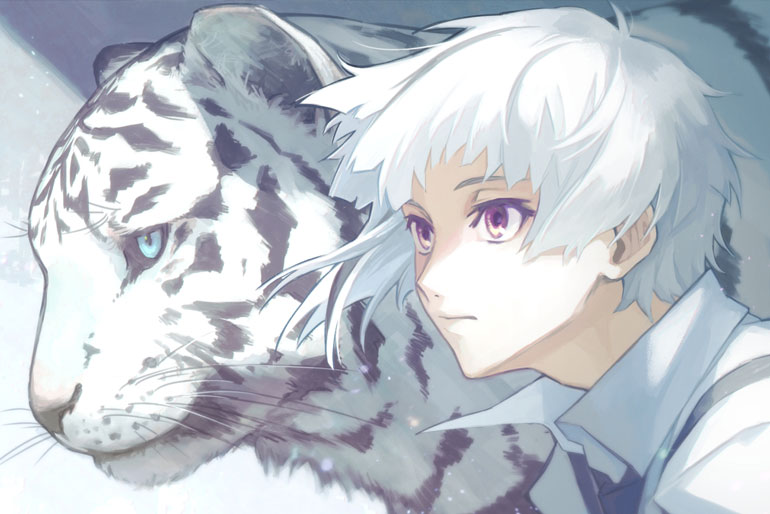
Atsushi Nakajima is the earnest young hero of Bungou Stray Dogs, instantly recognizable by his messy white-grey hair with black streaks at the tips. At the start of the series, Atsushi is an orphan literally thrown out of his orphanage, left homeless and starving. Despite that cruel beginning – or perhaps because of it – Atsushi remains a kind soul who worries about his own worth. Everything changes when he discovers he has a supernatural ability: he can transform into a ferocious white tiger when under the moonlight. This ability makes him a target for those who see the tiger as a threat, but it also lands him a new family of sorts in the Armed Detective Agency, a group of ability-users who solve mysteries and take on dangerous missions. Atsushi’s white hair and golden tiger eyes (when they glow) symbolize both his gentle nature and the fierce beast within. Throughout the series, he struggles with controlling his power and overcoming the psychological scars from his abusive childhood. With guidance and friendship, he gradually gains confidence. Atsushi is memorable for his big heart – he often chooses mercy over wrath, even for those who hurt him – and for those moments when he unleashes the tiger and shows you just how badass he can be when pushed. He’ll suddenly sprout claws, fangs, and an aura of the White Tiger of legend, moving with incredible speed and strength to protect his allies. Fans root for Atsushi because he’s an underdog who doesn’t realize how special he is, and it’s satisfying to watch him grow. By embracing both the kind boy and the wild tiger inside him, Atsushi truly earns his spot among these iconic white-haired characters.
Conclusion
From mentors and heroes to villains and anti-heroes, white-haired anime characters never fail to leave a lasting impression. They often carry a certain mystique or charisma that draws us in – whether it’s the hint of untold power, a tragic past reflected in those silver locks, or a unique personality that sets them apart. As we’ve seen with the characters above, their stories span the emotional spectrum, but each one has secured a place in anime history. Generations of fans have fallen in love with these characters (or loved to hate them), and it’s easy to see why. White-haired characters tend to be some of the coolest and most iconic figures around, always standing out in any scene. No matter the decade or genre, we find ourselves captivated by their presence. In the end, their snowy hair might signify wisdom, mystery, or simply a bold style choice – but whatever the case, these characters continue to be fan favorites, proving that white hair never goes out of style in anime.
